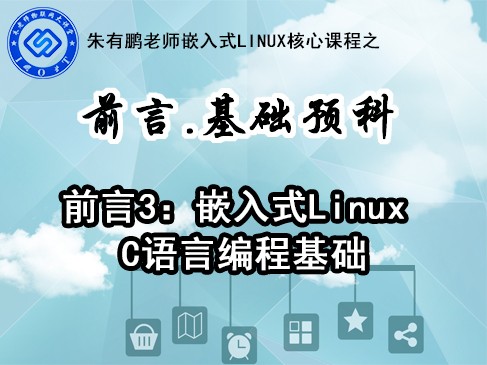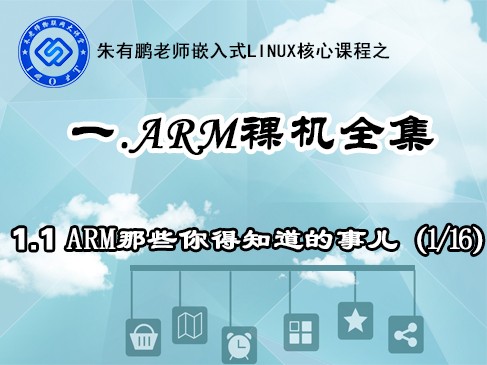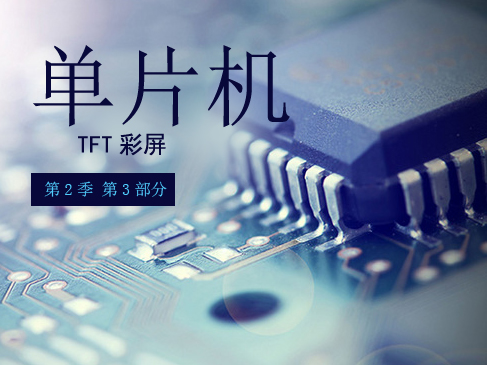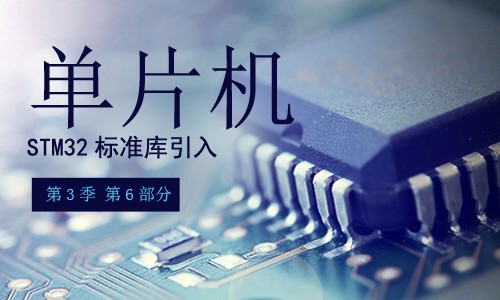-
Best selling package -
Selected Package -
Popularity package -
Exclusive package -
High salary package















-
Course Introduction -
Course outline
one 1.2.1 Programming principle of programmable device This course mainly explains the principle of programmable devices, why some ICs cannot be programmed and some can, so that everyone can understand the design and working principle of CPU "Only for paying users" click to download "1.2.1. Programming principle of programmable devices. ppt" [25:36] Start learning two 1.2.2. Meaning of instruction set to CPU This course mainly explains the essential relationship between assembly instruction set and CPU, as well as the development history of programming language. The purpose is to make you fully understand the meaning of assembly instruction set and its difference from high-level language. 「 Only for paying users 」 Click to download "1.2.2. Meaning of instruction set to CPU. ppt" [38:53] Start learning three 1.2.3 Difference between RISC and CISC This course mainly introduces CISC and RISC CPUs with different designs, and further explains the impact and significance of instruction sets on CPUs. Click "1.2.3. Differences between RISC and CISC. ppt" to download [32:19] Start learning four 1.2.4. Unified addressing&independent addressing&Harvard structure&a This section mainly introduces two pairs of concepts: unified addressing and independent addressing of IO and memory, Harvard structure and von Neumann structure. Through this section, I hope that students can have a deeper understanding of bus, memory, etc. to facilitate subsequent learning. "Only for paying users" Click to download "1.2.4. Unified Addressing&Independent Addressing&Harvard Structure&Von Neumann Structure. ppt" [40:25] Start learning five 1.2.5. Key of software programming control hardware register This section formally introduces two types of registers: general registers and special function registers. Through the explanation of registers, we can understand the principle that software controls hardware through registers during CPU design. 「 Only for paying users 」 Click to download "1.2.5. Key to software programming control hardware - register. ppt" [28:23] Start learning six 1.2.6. Summary of key points of ARM architecture This section follows the above sections 1-5 and summarizes some architecture features of ARM SOC. "Only for paying users" Click to download "1.2.6. Summary of ARM Architecture Essentials. ppt" [11:56] Start learning seven 1.2.7 Details of memory mapping of S5PV210 This section describes the address map of S5PV210, focusing on the memory mapping relationship. "Only for paying users" Click to download "1.2.7. Details of memory mapping of S5PV210. ppt" [49:57] Start learning eight 1.2.8 Interface between CPU and external memory This section describes various external memory interfaces of S5PV210, with the focus on Flash interface. Click "1.2.8. Interface between CPU and external memory. ppt" [54:10] Start learning nine 1.2.9. Details of S5PV210 startup process 1 Explain the startup process of S5PV210, the contents and objectives of BL0, BL1 and BL2. "Only for paying users" Click to download "1.2.9. Details of the startup process of S5PV210 1. ppt" [59:06] Start learning ten 1.2.10. Details of S5PV210 startup process 2 Explain the startup process of S5PV210, the contents and objectives of BL0, BL1 and BL2. "Only for paying users" Click to download "1.2.10.S5PV210 Startup Process Details 2.ppt" [54:23] Start learning eleven 1.2.11. How to select different startup methods on the development board Combined with the X210 development board, it describes how to set various startup modes on the development board. "Only for paying users" Click "1.2.11. How to select different startup methods on the development board. ppt" [26:27] Start learning twelve 1.2.12. ARM programming mode and 7 modes The general programming mode of ARM and the seven working modes of CPU are described. "Only for paying users" Click to download "1.2.12. ARM programming mode and 7 modes. ppt" [31:52] Start learning thirteen 1.2.13. Details of ARM's 37 registers Describes the 37 general registers of ARM CPU and the general usage of each register. "Only for paying users" click to download "1.2.13. Details of ARM's 37 registers. ppt" [41:46] Start learning fourteen 1.2.14. Brief Introduction to ARM's Exception Handling Method Describes the ARM exception handling method, the design and working principle of the exception vector table. "Only for paying users" Click to download "1.2.14. Brief introduction to ARM exception handling method. ppt" [41:08] Start learning fifteen 1.2.15.ARM Assembly Instruction Set 1 Overview of ARM assembly instruction set, focusing on eight addressing modes of ARM assembly. Click "1.2.15_16. ARM Assembly Instruction Set 1_2. ppt" to download "1.2.15_16. ARM Assembly Instruction Set 1_2. ppt" [30:01] Start learning sixteen 1.2.16. ARM Assembly Instruction Set 2 Comprehensively learn ARM assembly instructions, this is Section 2. Click "1.2.15_16. ARM Assembly Instruction Set 1_2. ppt" to download "1.2.15_16. ARM Assembly Instruction Set 1_2. ppt" [33:32] Start learning seventeen 1.2.17. ARM Assembly Instruction Set 3 The data transmission instruction, branch instruction and soft interrupt instruction of ARM are mainly introduced. Click "1.2.17. ARM assembly instruction set 3. ppt" to download "only for paying users" [53:40] Start learning eighteen 1.2.18. ARM Assembly Instruction Set 4 This section mainly describes the coprocessor cp15 of ARM and the coprocessor instructions mrc and mcr. Click "1.2.18. ARM assembly instruction set 4. ppt" to download "1.2.18. ARM assembly instruction set 4. ppt" [35:26] Start learning nineteen 1.2.19. ARM Assembly Instruction Set 5 This section mainly describes ARM stack operation instructions, four stacks, multi register batch read/write suffixes, etc. Click "1.2.19. ARM assembly instruction set 5. ppt" to download "1.2.19. ARM assembly instruction set 5. ppt" [34:53] Start learning twenty 1.2.20 ARM assembly pseudo instruction This section mainly describes the pseudo instructions commonly used in gnu assembly, focusing on ldr, adr pseudo instructions and their differences "Only for paying users" Click to download "1.2.20. ARM assembly pseudo instruction. ppt" [39:17] Start learning

















